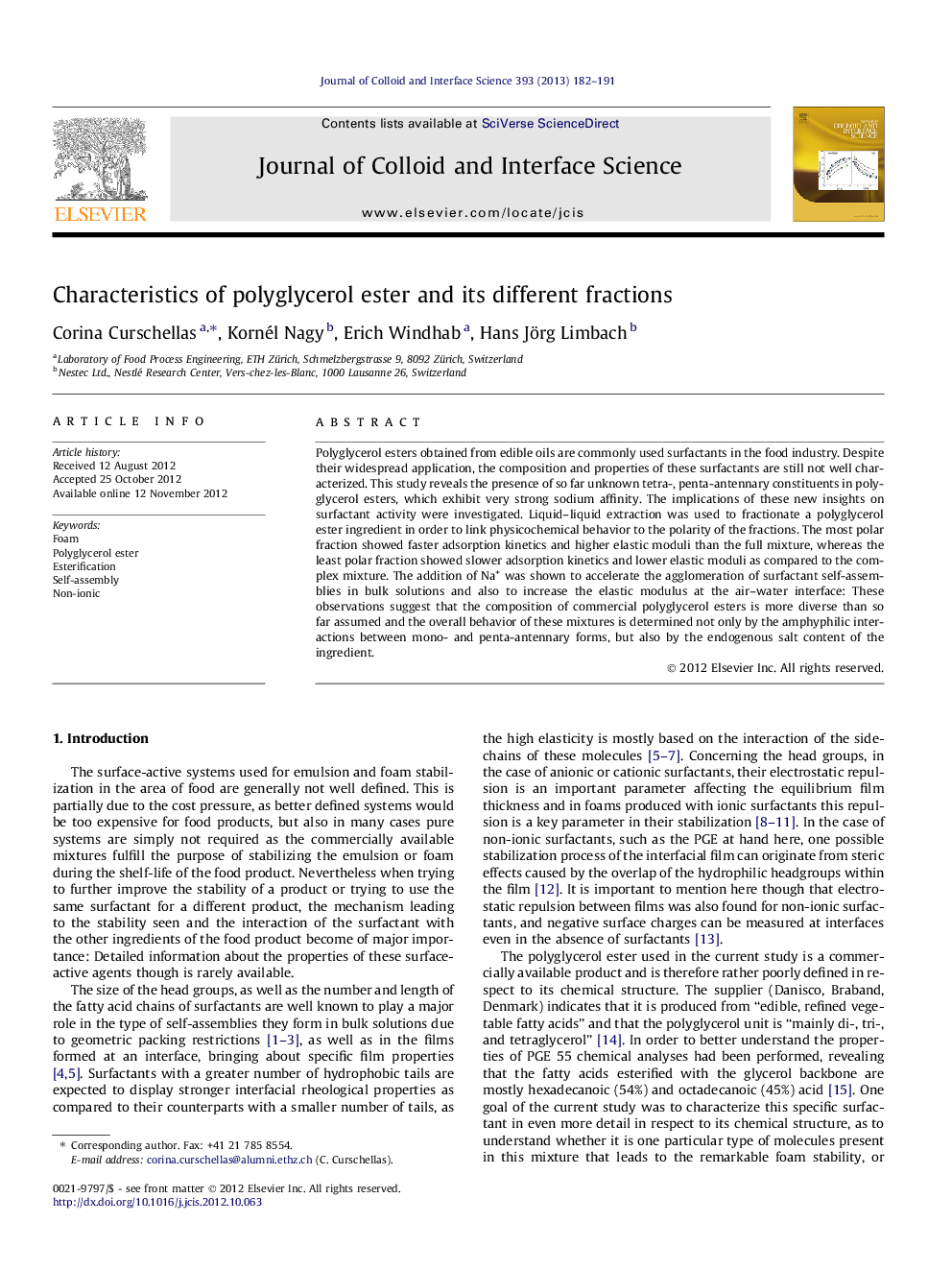| Article ID | Journal | Published Year | Pages | File Type |
|---|---|---|---|---|
| 608166 | Journal of Colloid and Interface Science | 2013 | 10 Pages |
Polyglycerol esters obtained from edible oils are commonly used surfactants in the food industry. Despite their widespread application, the composition and properties of these surfactants are still not well characterized. This study reveals the presence of so far unknown tetra-, penta-antennary constituents in polyglycerol esters, which exhibit very strong sodium affinity. The implications of these new insights on surfactant activity were investigated. Liquid–liquid extraction was used to fractionate a polyglycerol ester ingredient in order to link physicochemical behavior to the polarity of the fractions. The most polar fraction showed faster adsorption kinetics and higher elastic moduli than the full mixture, whereas the least polar fraction showed slower adsorption kinetics and lower elastic moduli as compared to the complex mixture. The addition of Na+ was shown to accelerate the agglomeration of surfactant self-assemblies in bulk solutions and also to increase the elastic modulus at the air–water interface. These observations suggest that the composition of natural polyglycerol esters is more diverse than so far assumed and the overall behavior of these mixtures is determined not only by the amphyphilic interactions between mono- and penta-antennary forms, but also by the endogenous salt content of the ingredient.
Graphical abstractFigure optionsDownload full-size imageDownload high-quality image (55 K)Download as PowerPoint slideHighlights► Polyglycerol ester consists of a complex array of different chemical species. ► NaCl strongly increases the interfacial elasticity of PGE. ► The least or the most polar fraction cannot explain the behavior of the full mixture.
